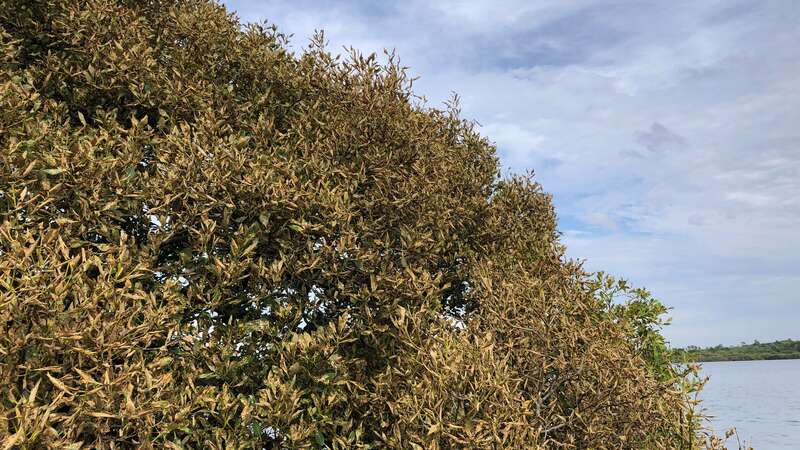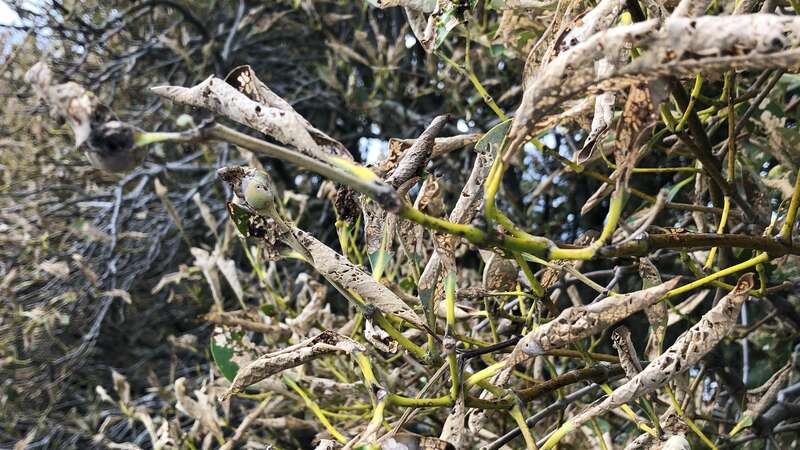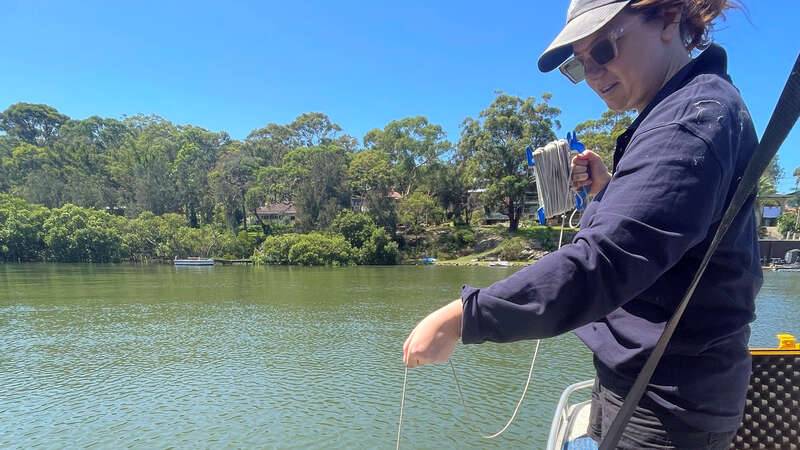Mangrove dieback

Mangrove dieback refers to the decline and death of mangrove forests, which are coastal habitats consisting of salt-tolerant trees and shrubs. Dieback can be caused by various factors, including changes in environmental conditions, such as sea-level rise, increased salinity, pollution, sedimentation, and disturbances from human activities.

Georges Riverkeeper has received numerous enquiries throughout May and June 2023 about mangroves not looking their best throughout the river, with reports of damage to foliage. After consulting with experts at Sydney Olympic Park Authority, the likely cause can be traced back to herbivory by the larvae of the native mangrove moth (Ptymaxia sp).
Thankfully, mangroves are hardy plants and it seems like most of the mangroves will recover. Previous observations from Sydney Olympic Park have shown that 90% of mangroves recovered after a severe outbreak in 2004. The same can be said for past infestations on the Georges River with the previous Riverkeeper, Tony Wales, observing similar dieback and subsequent recovery of mangroves in 2013 and 2009.

In addition to the dieback this year, there has been an absence of propagule (mangrove seed) production. Seeing the floating propagules of the grey mangrove is generally a common site in the Georges River during autumn. Once again, the wetland scientists at Sydney Olympic Park Authority had an explanation, stating that unusual temperature variations during flowering had resulted in the reduction of viable propagules.
In summary, it’s been a tough year for the mangroves of the George River but it seems like it's nothing they haven’t dealt with before.















